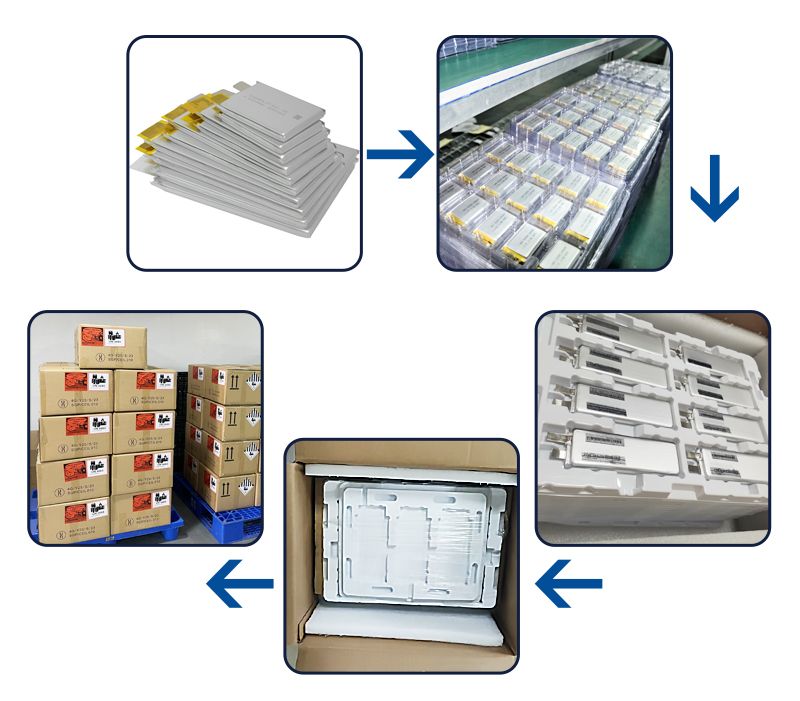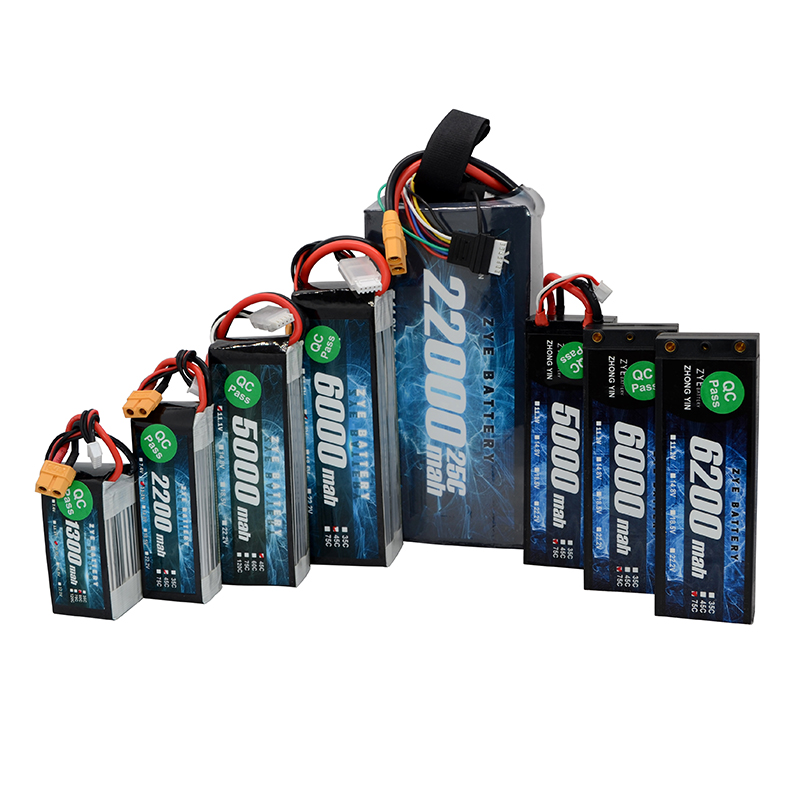Are There Any Risks to DIY Building a Custom LiPo Pack?
2025-07-02
Custom LiPo battery packs have become increasingly popular among hobbyists and electronics enthusiasts. While the allure of creating a tailored power solution is strong, it's crucial to understand the potential risks involved in DIY LiPo pack construction. This article delves into the dangers, precautions, and best practices for those considering building their own LiPo packs.
Soldering Dangers: Can Poor Connections Cause LiPo Fires?
One of the most significant risks in DIY LiPo battery pack construction lies in the soldering process. Improper soldering techniques can lead to disastrous consequences, including short circuits and potential fires.
The Perils of Subpar Soldering
Substandard soldering techniques can lead to weak, unreliable connections between cells in a battery pack, which significantly increases the risk of operational failures. Poor soldering can cause increased electrical resistance at the connection points, leading to excessive heat generation during battery operation. This excess heat can escalate quickly, potentially triggering thermal runaway—a dangerous phenomenon where the battery’s temperature rises uncontrollably. In the worst-case scenario, thermal runaway can result in catastrophic failure, such as fire or explosion, putting both the user and surrounding equipment at risk. In addition to the potential safety hazards, weak solder joints can also cause a loss of battery performance, reducing the overall efficiency and lifespan of the battery pack.
Mitigating Soldering Risks
To minimize these dangers, consider the following precautions:
1. Use High-Quality Soldering Equipment and Materials: The quality of your soldering iron, solder, and flux plays a crucial role in creating secure and efficient connections. Ensure that the equipment you use is suited for the specific needs of battery pack construction, providing consistent heat control and good-quality solder that will maintain a strong connection without excessive buildup.
2. Ensure Proper Ventilation in Your Work Area: Soldering produces fumes that can be harmful to health. A well-ventilated workspace is essential to prevent the inhalation of harmful vapors, including lead or other metals that can be present in solder. Consider using fume extractors or fans to direct the fumes away from you during the soldering process.
3. Wear Appropriate Personal Protective Equipment (PPE): When soldering, it's important to wear appropriate PPE to protect yourself from potential hazards. This may include gloves to avoid burns, safety glasses to protect your eyes from solder splashes, and a lab coat or protective clothing to shield your skin from heat or molten solder.
4. Practice Soldering Techniques on Non-Critical Components: Before working on a battery pack, practice your soldering skills on less critical components to gain experience and confidence. This will help you refine your technique, allowing you to create more precise and reliable connections when assembling battery packs. Practicing also gives you the opportunity to troubleshoot any issues with your technique or equipment before working on expensive or potentially hazardous projects.
Why Must Voltage & Capacity Be Identical in DIY Packs?
When constructing a DIY LiPo battery pack, it's paramount to use cells with matching voltage and capacity. Failing to do so can lead to a host of issues that compromise both performance and safety.
The Consequences of Mismatched Cells
Using mismatched cells, whether in terms of voltage or capacity, in a single battery pack can lead to a variety of performance and safety issues. One of the primary consequences is uneven discharge rates, where some cells deplete their charge faster than others, causing instability in the entire pack. This uneven discharge can lead to overcharging of weaker cells, as they may reach full charge before the rest of the cells in the pack, potentially resulting in overheating or even thermal runaway.
Additionally, mismatched cells contribute to a reduced overall pack capacity, as the pack’s performance is limited by the weakest cell. Over time, this imbalance accelerates cell damage and increases the risk of fire hazards, especially if weaker cells are subjected to repeated stress or overcharge conditions. Such risks are not only detrimental to the battery's performance but can also be dangerous to the user and surrounding equipment.
Ensuring Cell Compatibility
To avoid these pitfalls, adhere to these guidelines:
1. Source Cells from Reputable Manufacturers: Choose high-quality cells from trusted brands or suppliers, as they are more likely to meet industry standards and have consistent performance characteristics.
2. Use a Multimeter to Verify Individual Cell Voltages: Before assembling your battery pack, use a multimeter to check the voltage of each individual cell. This step ensures that no cell is overcharged or undercharged, which can lead to problems down the line.
3. Consider Purchasing Matched Cell Sets: Specialized suppliers often offer matched cell sets, where cells are pre-tested and grouped according to similar voltage and capacity. These sets can save you time and reduce the risk of mismatched cells.
4. Avoid Mixing Cells from Different Manufacturers or Production Batches: Even slight differences in cell chemistry or manufacturing process can result in mismatched performance. It’s best to use cells from the same manufacturer and production batch to ensure uniformity in your pack.

How to Ensure Even Charging in Homemade LiPo Packs?
Achieving balanced charging is crucial for the longevity and safety of your DIY LiPo battery pack. Uneven charging can lead to cell degradation, reduced performance, and potential safety hazards.
The Importance of Balance Charging
Balance charging ensures that each cell in your pack reaches its optimal voltage simultaneously. This process helps to:
1. Maximize pack capacity and performance
2. Extend the overall lifespan of your battery pack
3. Reduce the risk of overcharging individual cells
4. Minimize the potential for thermal runaway and fire hazards
Implementing Effective Balance Charging
To achieve proper balance charging in your DIY LiPo pack:
1. Incorporate a balance lead into your pack design
2. Use a charger specifically designed for balance charging LiPo batteries
3. Regularly monitor individual cell voltages during the charging process
4. Consider investing in a battery management system (BMS) for larger or more complex packs
While DIY LiPo pack construction can be a rewarding endeavor, it's essential to approach the process with caution and respect for the potential risks involved. By adhering to proper safety protocols, using high-quality components, and implementing effective charging practices, you can mitigate many of the dangers associated with custom LiPo pack building.
For those seeking a safer alternative to DIY construction, consider exploring the range of custom LiPo battery solutions offered by Ebattery. Our expert team can provide tailored battery packs that meet your specific needs while ensuring the highest standards of safety and performance. To learn more about our custom LiPo options, please contact us at cathy@zyepower.com.
References
1. Smith, J. (2022). "Safety Considerations in DIY LiPo Battery Pack Construction." Journal of Electronics Engineering, 45(3), 178-192.
2. Johnson, A. et al. (2021). "Thermal Runaway Risks in Custom LiPo Pack Assemblies." International Battery Safety Conference Proceedings, 87-102.
3. Lee, S. (2023). "Balancing Act: Achieving Even Charging in Multi-cell LiPo Packs." Power Electronics Magazine, 18(2), 34-41.
4. Brown, R. (2022). "The Impact of Cell Matching on LiPo Pack Performance and Longevity." Battery Technology Review, 29(4), 215-229.
5. Zhang, L. et al. (2023). "Advanced Soldering Techniques for Safe LiPo Battery Assembly." Journal of Power Sources, 512, 230619.
























































